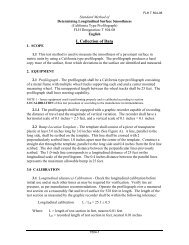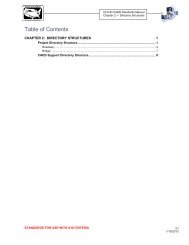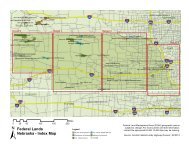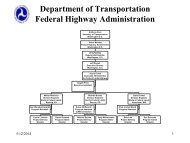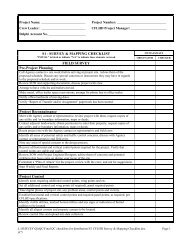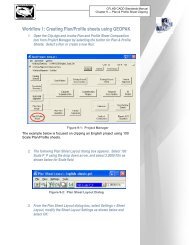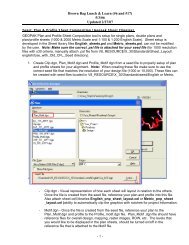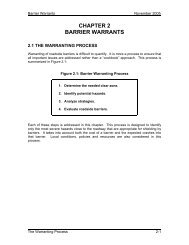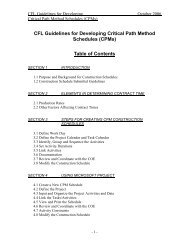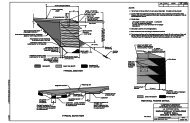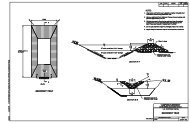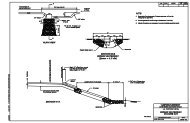55 CHAPTER 6 â PAVED AND UNPAVED ROAD SECTIONS This ...
55 CHAPTER 6 â PAVED AND UNPAVED ROAD SECTIONS This ...
55 CHAPTER 6 â PAVED AND UNPAVED ROAD SECTIONS This ...
You also want an ePaper? Increase the reach of your titles
YUMPU automatically turns print PDFs into web optimized ePapers that Google loves.
<strong>CHAPTER</strong> 6 – <strong>PAVED</strong> <strong>AND</strong> UN<strong>PAVED</strong> <strong>ROAD</strong> <strong>SECTIONS</strong>PERMANENT UN<strong>PAVED</strong> <strong>ROAD</strong>SIn some ways, use of geosynthetics to extend the life and improve the performance ofunpaved roadway sections is similar to the unbound section of the paved roads describedearlier. However, current practice tends to treat reinforcement of unpaved roads as aseparate topic from paved road. <strong>This</strong> primarily comes from the lower traffic volume andacceptance of larger ruts that can develop in unpaved road applications.Summary of National GuidelinesAASHTO PP 46-01 (AASHTO 2001) provides guidelines for base course reinforcementby geosynthetics. It recommends following the procedures laid out in Holtz et al. (1998)or the procedures from the GMA White Paper II (Berg et al., 2000). A brief descriptionof both approaches follows.Holtz et al. (1998) consider design methods for permanent applications, where thebearing capacity factor, N c , can be increased to reduce the thickness of any stabilizinglayers, but it is assumed the reinforcement will not improve the structural layers(aggregate base course). No reduction in aggregate base course thickness is allowed.Berg et al. (2000)’s methods are not explicitly applicable to permanent unpaved roads.The methods may eventually be applied if enough field or laboratory data are collectedfor calibration.In the survey, eight of 11 respondents reported being involved in unpaved roadwaydesign, either new construction or rehabilitating of existing roads. When rehabilitatingroadways, six of the eight respondents said they had been involved in a project that alsoused geosynthetics. New construction lagged here, with only two of eight respondentsreporting geosynthetic usage. It would appear then, that unpaved road construction is acommon part of the FLHD work, and that if geosynthetics use in practice can beimproved or updated, potential benefits could be achieved.Level of MaturityDeveloping. While the national design methods do not allow for reduced sections,geosynthetics in unpaved roads are often used in separation and filtration applications toprevent mixing of the base courses with the native soils. In the past two decades, anumber of numerical studies and proposed design methods have been suggested in theliterature for reinforcement applications such that smaller base course layers can bespecified.Recent AdvancesPermanent unpaved road design has appeared often in literature. Early work by Giroudand Noiray (1981) and Steward et al. (1977) proposed design methods that required deepand large rutting magnitudes to mobilize a tensioned membrane effect in the geotextile63



